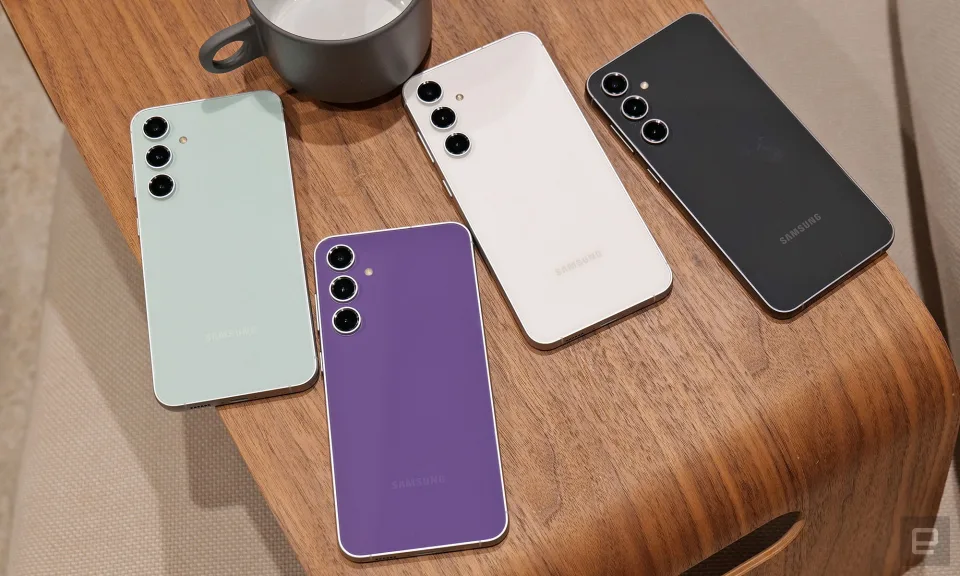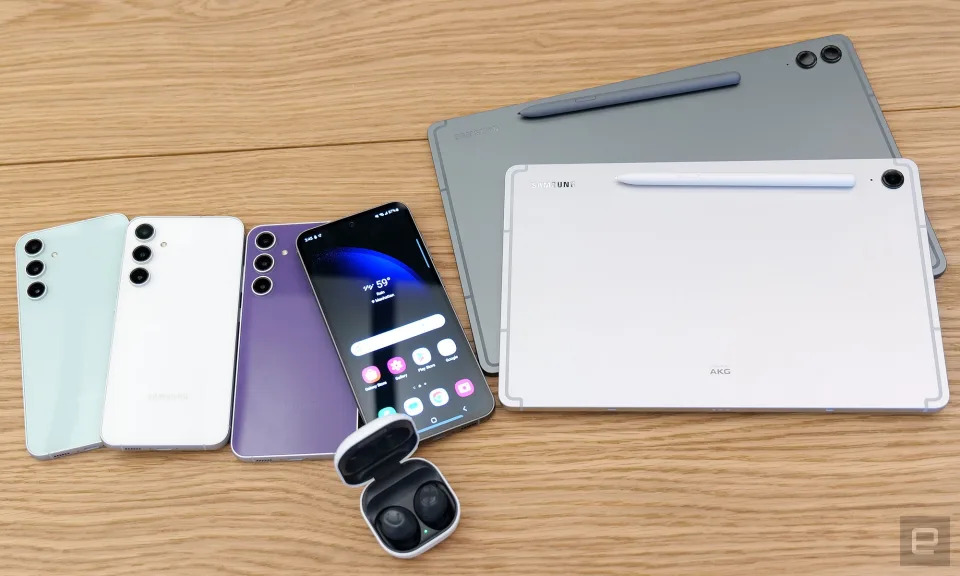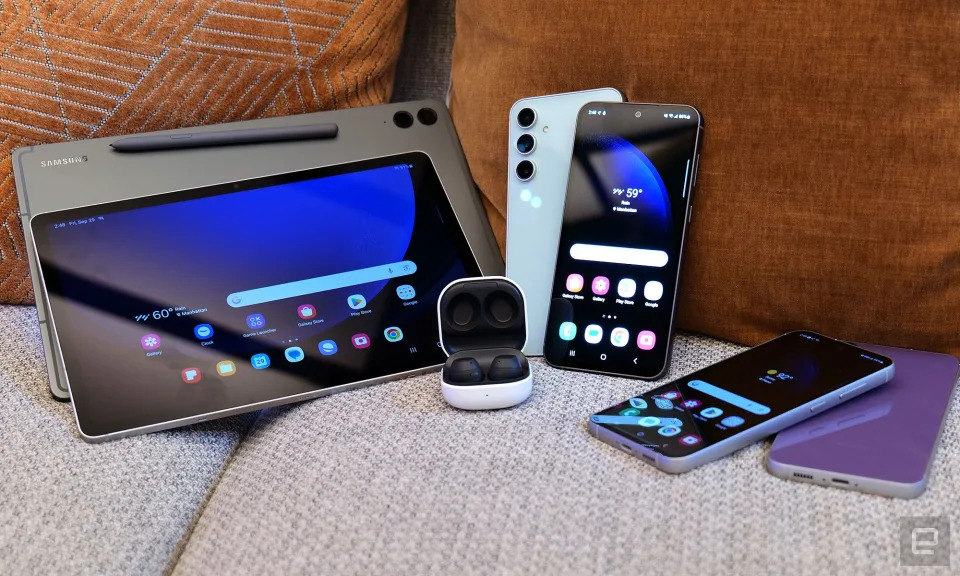I’ve never fully grasped Samsung’s “fan edition” (FE) branding, and with the absence of an FE version for the S22 last year, I wondered if the concept had been abandoned altogether. However, in 2023, Samsung is reintroducing the FE designation with a twist. Instead of standing for “fan edition,” it will now signify devices that share certain features and design elements with the company’s flagship products but at more affordable prices. Additionally, Samsung has expanded the FE lineup by introducing four new models: the Galaxy S23 FE, Galaxy Tab S9 FE, Galaxy Tab S9 FE+, and the Galaxy Buds FE.
The S23 FE appears to be the most straightforward among them. It maintains a design nearly identical to the standard model but features a 120Hz 6.4-inch OLED display, positioning it between the standard S23 (6.1 inches) and the S23+ (6.6 inches) in terms of size. On the rear, it retains three rear cameras, including a 50-MP main sensor, a 12-MP ultra-wide, and a slightly lower-resolution 8-MP telephoto with a 3x optical zoom. Notably, unlike Samsung’s A-series phones, the S23 FE still boasts a glass design with metal sides; the difference lies in the use of Gorilla Glass 5 instead of Gorilla Glass Victus found on the standard S23. Additionally, the S23 FE offers a refreshed range of colors, including mint, purple, cream, and graphite, along with a couple of exclusive hues available on Samsung.com.
Internally, the primary distinction is that the S23 FE incorporates an older Snapdragon 8 Gen 1 chip (as opposed to a Gen 2 processor). While this chip is still relatively fast, it doesn’t provide full flagship-level performance. The battery capacity has seen a slight increase to 4,500 mAh. Aside from these differences, the specifications remain quite similar. Storage options include 128GB or 256GB, and the phone offers features such as an in-screen fingerprint reader and an IP68 rating for dust and water resistance.
Moving on to the Galaxy Tab S9 FE and S9 FE+, their specs are nearly identical, except for some variations in camera configuration, battery size, and display size (10.9 inches for the Tab S9 FE vs. 12.3 inches for the Tab S9 FE+). One significant departure from the standard Tab S9 is that the FE models feature LCD displays instead of OLED panels. Initially, this raised concerns since Samsung’s OLED screens are renowned for their quality and have become a signature feature on its mobile devices. However, after seeing them in person, even with a slightly lower maximum refresh rate (90Hz compared to 120Hz), there doesn’t seem to be much cause for worry. The Tab S9 FE’s displays are bright, vibrant, and even support Samsung’s Vision Booster technology for enhanced outdoor visibility.

Similar to the S23 FE, the Tab S9 FE utilizes less powerful hardware, equipped with an Exynos 1380 chip instead of a Snapdragon 8 Gen 2. Nevertheless, Samsung claims that the Tab S9 FE offers 38 percent better CPU performance and 73 percent faster GPU performance when compared to the Tab S7 FE from 2021. While comparing it to a two-year-old model may not be the most convincing benchmark, it’s important to note that there was no Tab S8 FE in the lineup. What’s particularly commendable is that Samsung has maintained the tablet’s overall design, featuring a sleek aluminum chassis and including an S-Pen, just as you would find on the standard model.
Lastly, there’s the Galaxy Buds FE, essentially a more affordable version of the standard Galaxy Buds 2 but without wireless charging. The case remains identical, complete with a USB-C port at the back, with the only change being in the design of the buds themselves. Compared to their pricier counterparts, the Galaxy Buds FE feature a flatter touch panel, a modification made in response to customer feedback indicating that a curvier design made tap gestures more challenging to execute.

Despite being more affordable, the Galaxy Buds FE still offer active noise cancellation and support for passthrough ambient sound. Interestingly, they are expected to have slightly longer battery life, lasting around six hours with ANC enabled or nine hours with it turned off. Two noteworthy new features include the ability to locate the buds using SmartThings Find and Easy Pair/Auto Switch, making it faster and simpler to manage audio when connected to multiple devices.
Sacrificing some performance or features may be worthwhile for those seeking more budget-friendly options, which aligns with the FE line’s purpose. For individuals uninterested in wireless charging, the $100 Galaxy Buds FE could be an excellent alternative to the $150 Galaxy Buds 2. The Tab S9 FE lineup presents a similar scenario, offering slightly lower performance but starting at $450 compared to the $800 price tag of the regular model. Finally, the S23 FE, priced at $600, provides a $200 savings over the standard S23, despite featuring a larger display and battery. If you’re content with devices that may not be as luxurious but come at a more accessible price point, the new Galaxy FE family offers appealing alternatives.
The Galaxy Tab S9 FE/FE+ and Galaxy Buds FE will be available on October 10, followed by the Galaxy S23 FE on October 26.




